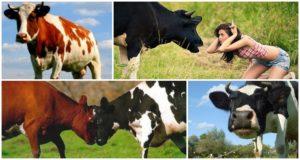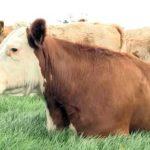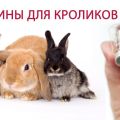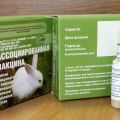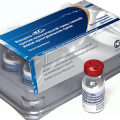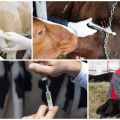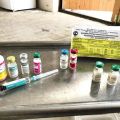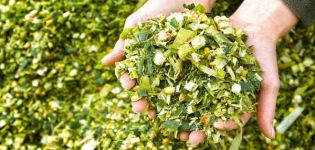Instructions for the use of vaccine against emkar in cattle and its contraindications
Emphysematous carbuncle, or emkar, is a dangerous bacterial disease that affects ruminants - cows and sheep. The disease causes irreparable harm to agriculture and is easily transmitted from one individual to another. Therefore, the prevention of emkar is of great importance for the well-being of the economy and obtaining high profits. It is important to strictly follow the instructions for use of the emkar vaccine to create strong immunity.
Composition and release form of the drug
The vaccine is sold in the form of a gray suspension, sealed in a glass bottle of 50, 100 and 200 cubic meters. see The supernatant may be gray or yellow, depending on the manufacturer or shelf life.
Aluminum hydroxide is used as an additional substance - 35% of the total vaccine volume. The main active ingredient is a strain of microbial anaerobic cells Clostridium chauvoei R15 - the causative agent of emkar in a weakened form.
Indications for use
It is used for the prevention of emkar disease in cattle and sheep. As a result of the use of the vaccine, stable immunity is formed, which lasts for 6 months. The vaccine does not harm the immune system of the animal and allows the cells to start producing the necessary antigens on their own. After application of the vaccine, cattle and sheep do not lose their productivity and continue to produce milk, meat and wool in the required quantities. The immune response is formed in 14 days, the body is fully restored in the same period. The vaccine should not be used to treat emphysematous carbuncle.

For additional prevention, drainage of pastures is carried out, especially swamps and floodplains of rivers near the alleged site of animal infection. Overflow of manure pits or too crowded keeping of young stock is unacceptable. There should be no cattle burial grounds within 5 km from the farm, especially in an area that is unfavorable for emphysematous carbuncle.
Instructions for the use of the vaccine "Emkar" for cattle
Cows can be vaccinated only by people with higher or secondary veterinary education. Before starting the administration of the drug, it is necessary to change into overalls that protect the hands and face. The use of rubber aprons and boots is mandatory.If a small amount of a substance gets on the mucous membrane, the place should be thoroughly rinsed and treated with a disinfectant solution.
If any response occurs - redness, itching, tearing - you should immediately contact a medical facility.
Emphysematous carbuncle is considered a particularly dangerous disease, therefore, each vaccine is subject to strict registration during the vaccination of the livestock. Vaccination of cattle is carried out starting from 6 months. There may be a different injection schedule - before pasture and after the end of the grazing season.
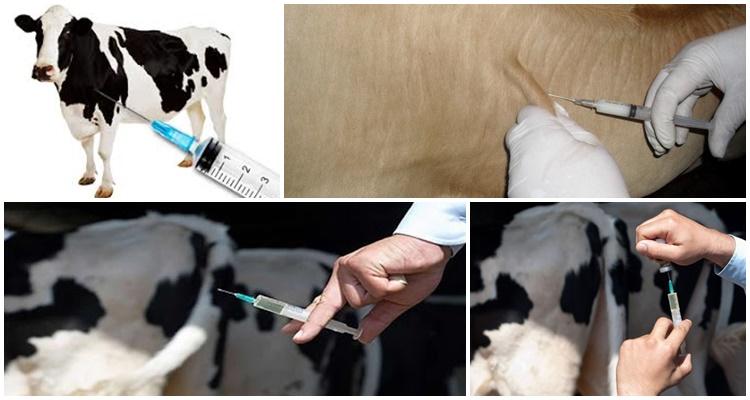
Injections are renewed every six months, with the exception of calf cows and long-term sheep. In farms that are not successful in terms of emkar, all livestock are vaccinated unscheduled for preventive purposes. Before use, the bottles are heated in the hand or in a warm water bath to a temperature of 35-36 degrees. Vaccination is carried out intramuscularly, in the upper third of the cow's thigh, in compliance with the rules of asepsis - the injection site is treated with 70% alcohol, disposable, sterilized instruments are used for animals.
You can start processing no earlier than 20 days before the release of cows to pasture. Animals over 4 years of age are not vaccinated due to economic impracticability, however, when an epidemic occurs, they are also treated.
Unwanted effects
The vaccine is safe to use and does not cause side effects in most cases. In sensitive or sick animals, it can cause general depression, refusal to feed and decrease in productivity. Sometimes there is a local increase in temperature. In case of persistent depression, you should immediately contact your veterinarian. It is not recommended to use the vaccine simultaneously with other immunological drugs, so as not to cause too strong a response in the body.
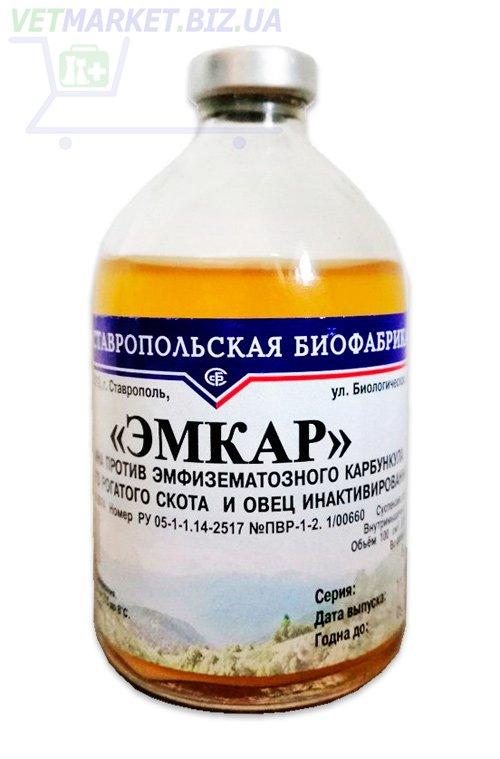
Cases in which the vaccine is prohibited
It is forbidden to use the vaccine for pregnant animals, especially in the last month of pregnancy or pregnancy. It is not recommended to use on gobies or rams after castration or any other surgical interventions. After calving, you need to give the body time to recover, at least 7-10 days.
The vaccine is prohibited for use as a medicinal product, but is used only for prevention. After forced slaughter, you can use meat without restrictions - the drug does not pose a danger to humans. Meat or milk of already sick animals is forbidden to eat - it is disposed of mechanically or chemically. The corpses of sick animals are burned.
Expiration date and storage rules
An open bottle cannot be stored - it must be disposed of immediately. Vaccines with signs of mold, flakes inside or any mechanical damage should not be stored. The maximum shelf life of an unopened package is 12 months.
The vaccine is stored out of the reach of children, animals and other employees. The bottle should not be exposed to sunlight, and the constant temperature is maintained at 10-15 degrees. The liquid must not be frozen - the vaccine loses its preventive properties. Transportation is allowed at a constant temperature of up to 25 degrees, in special thermal bags for transporting medicines.
